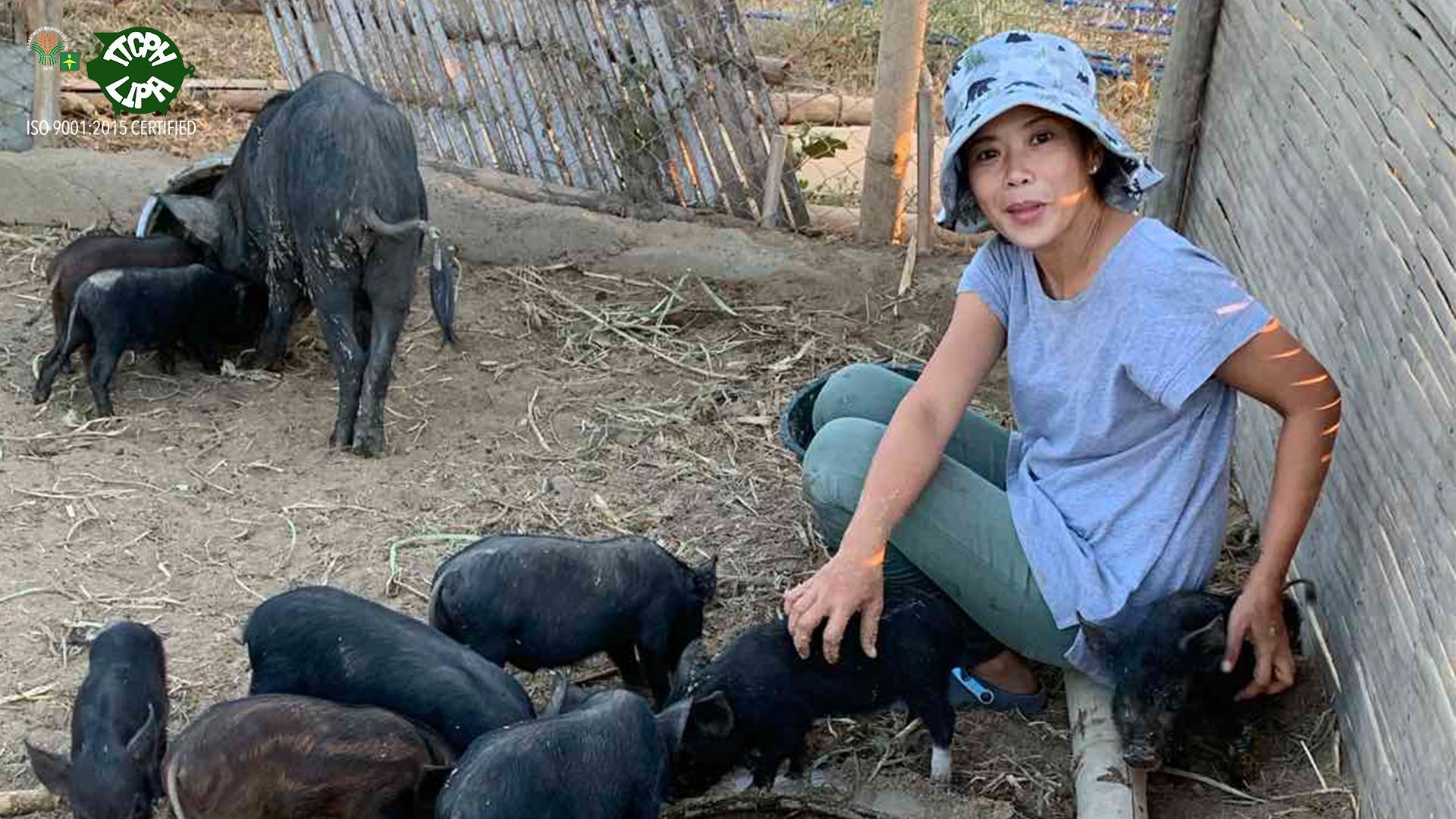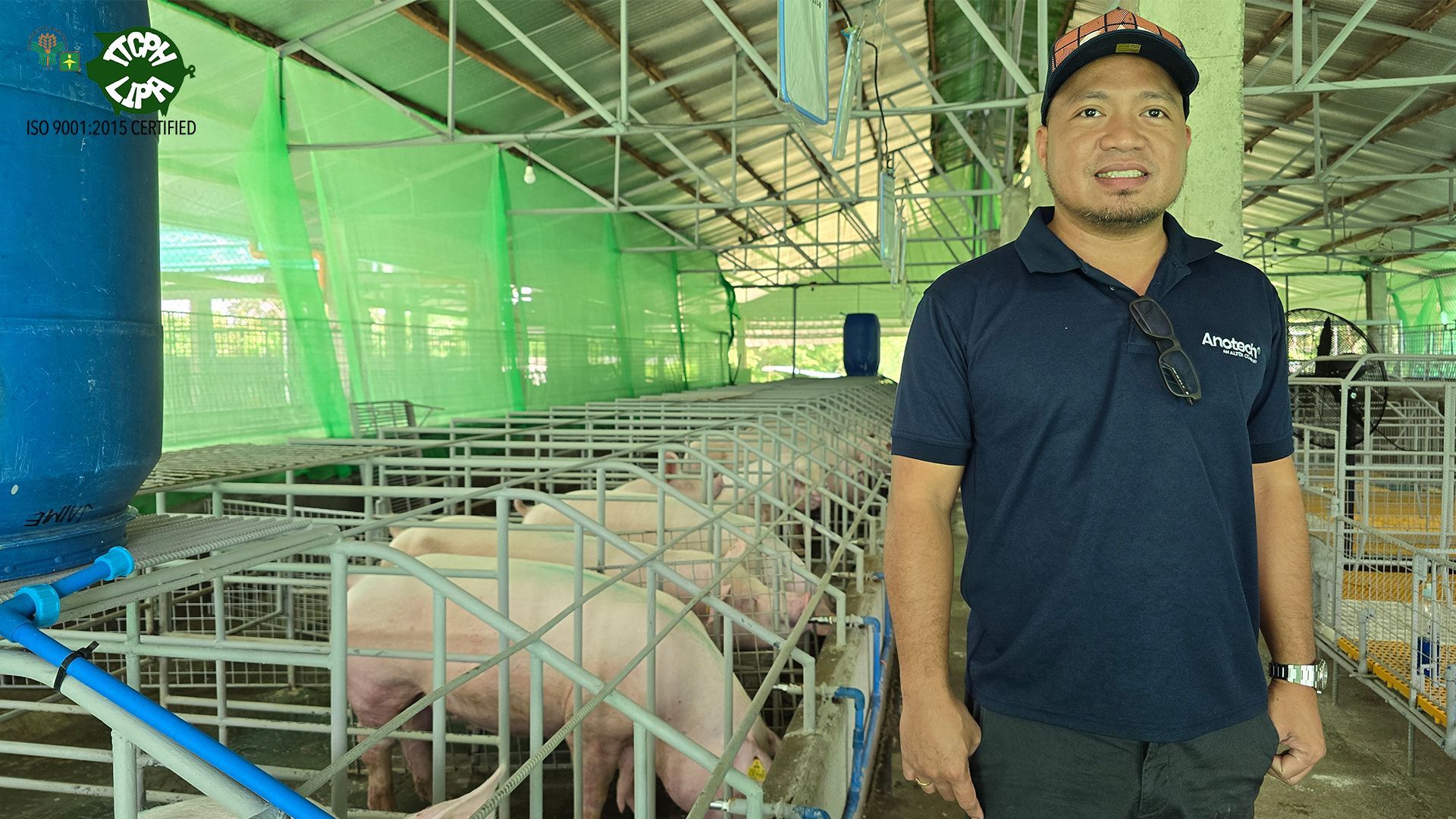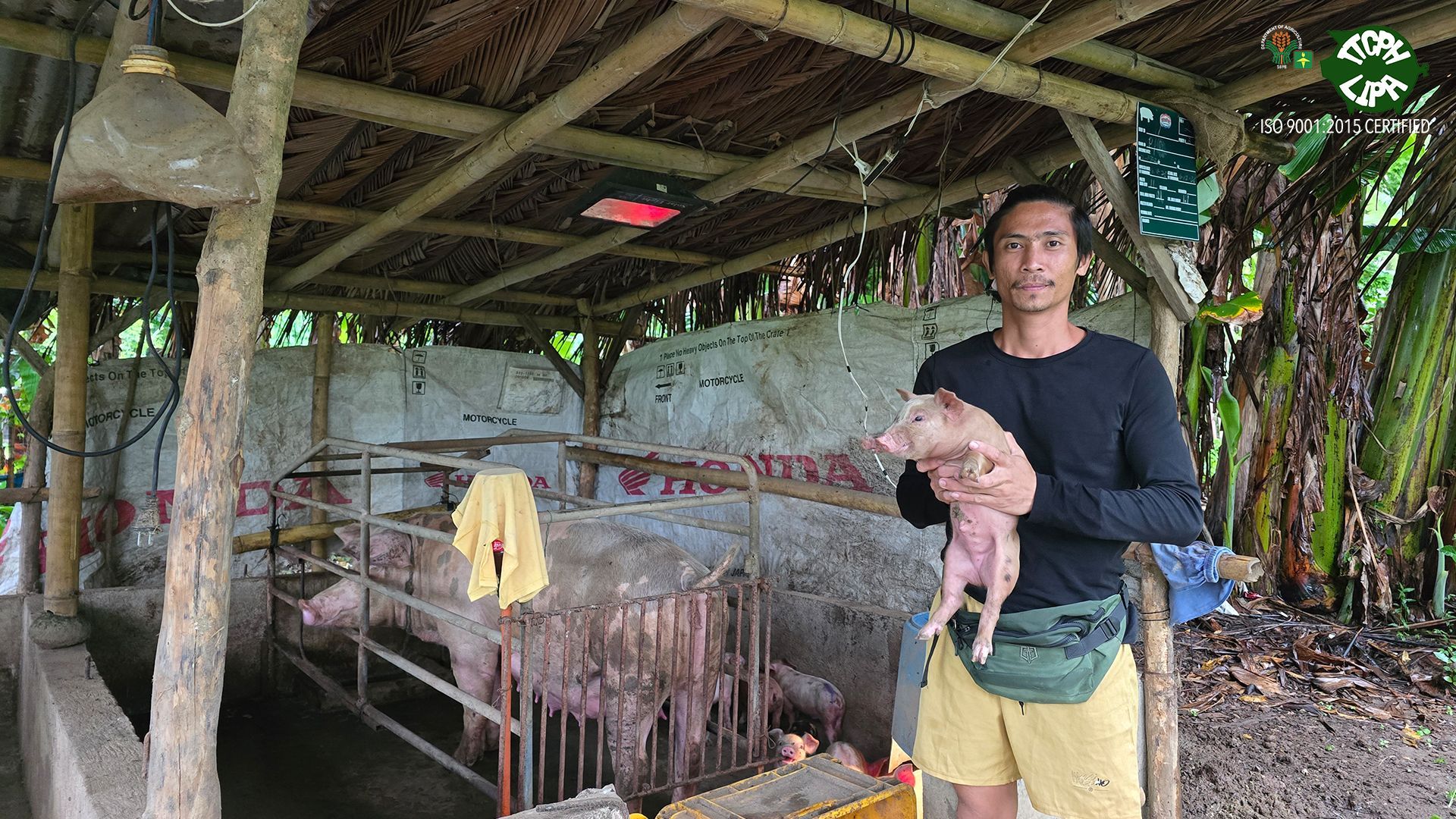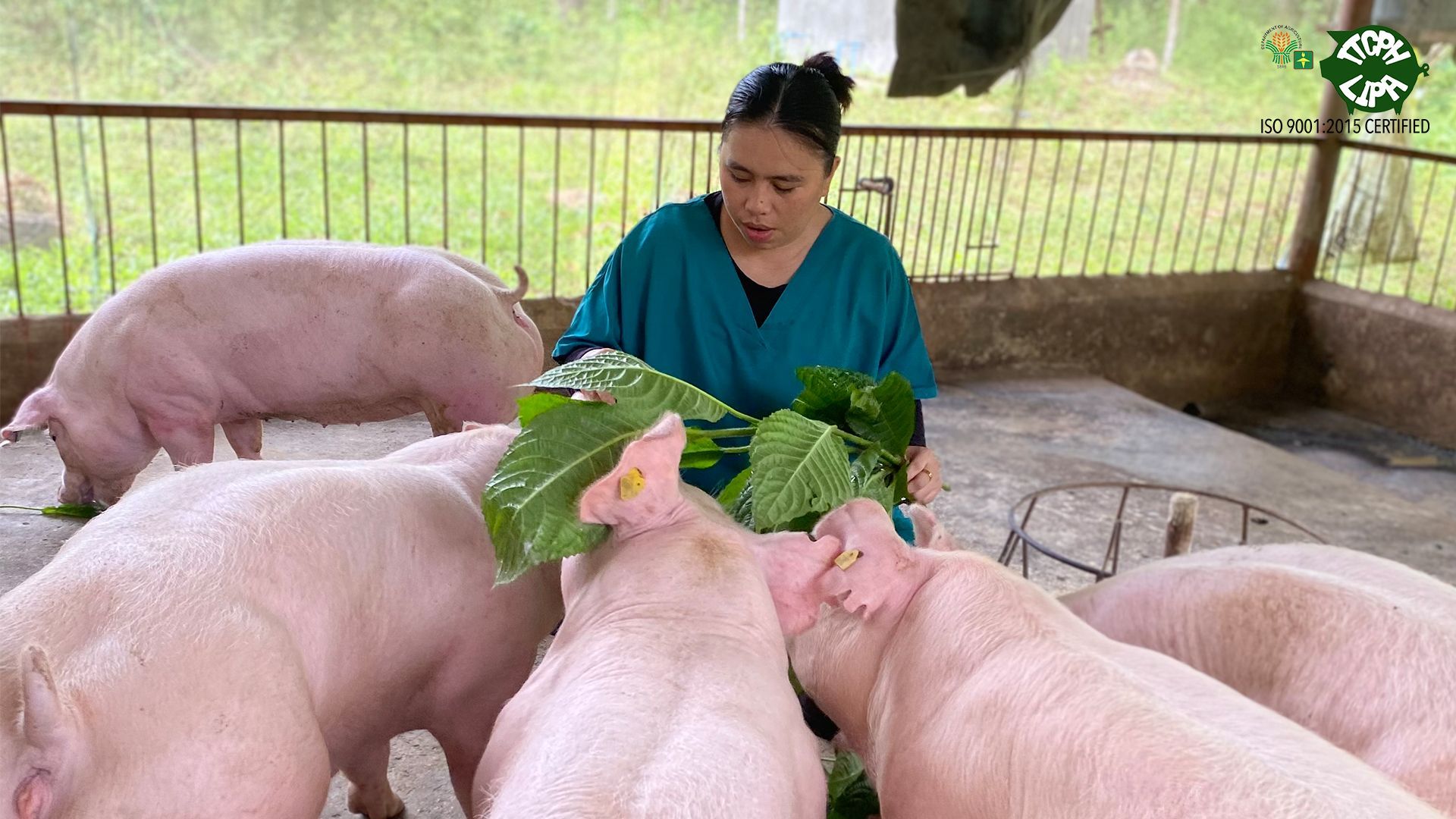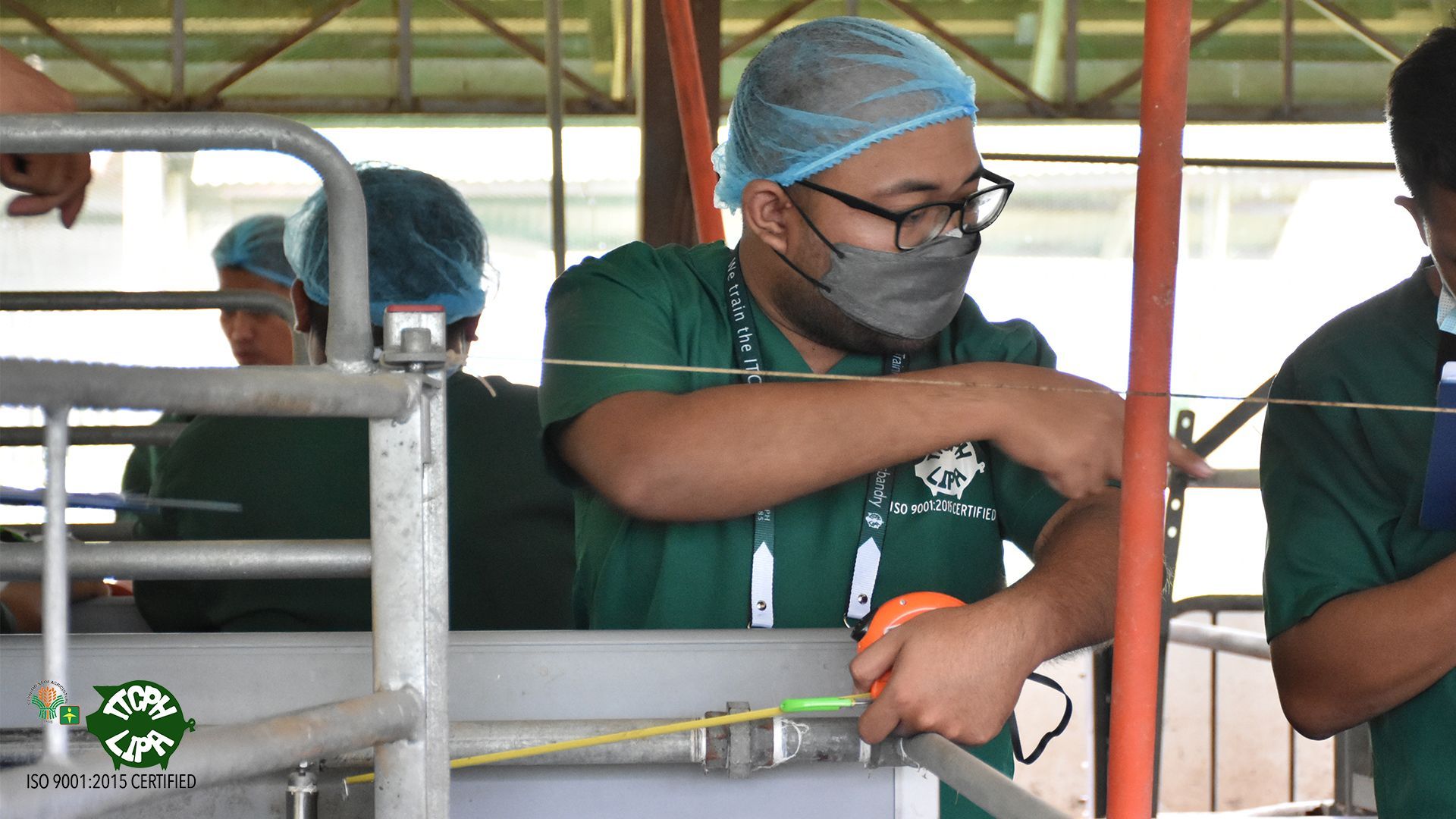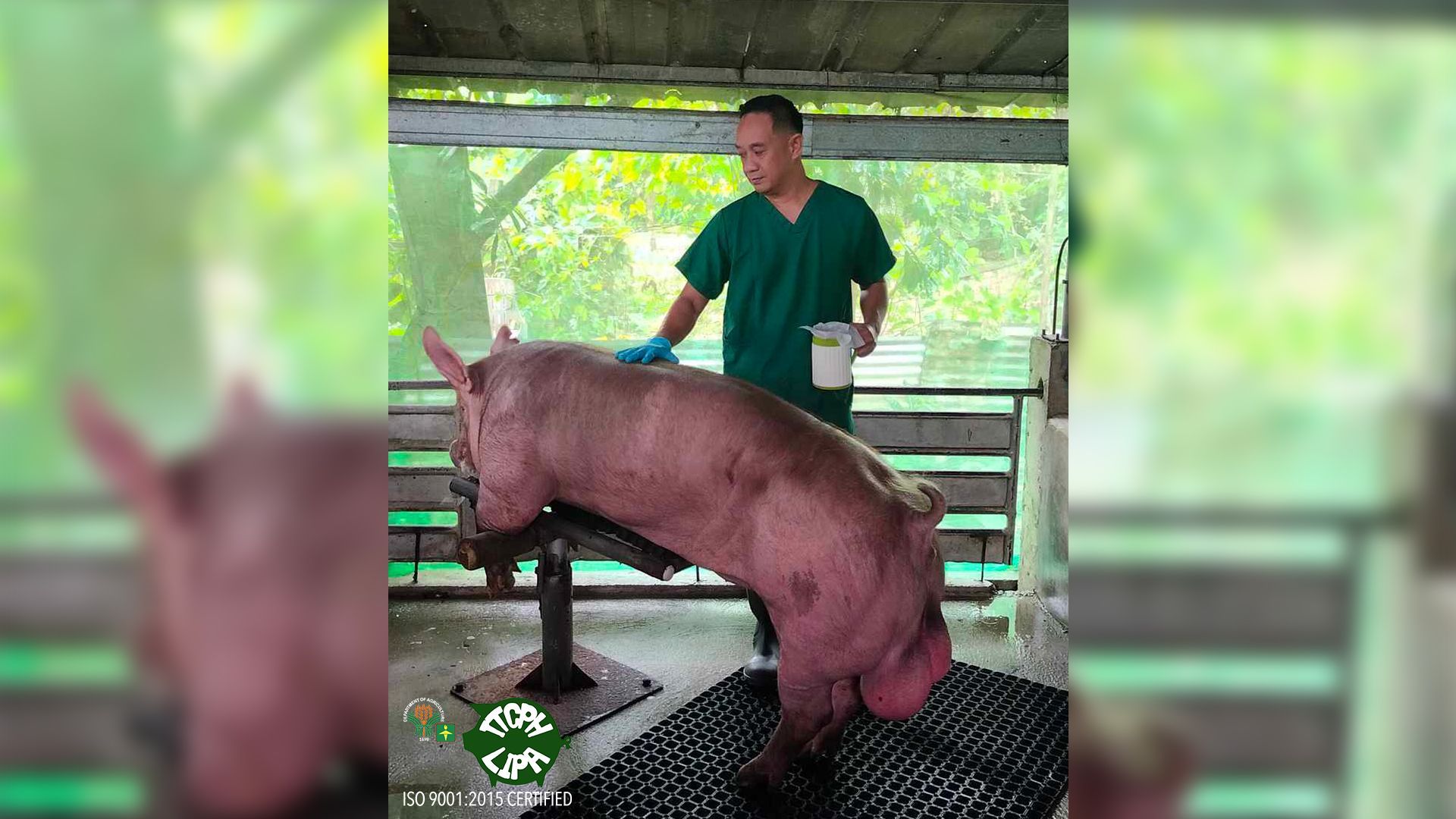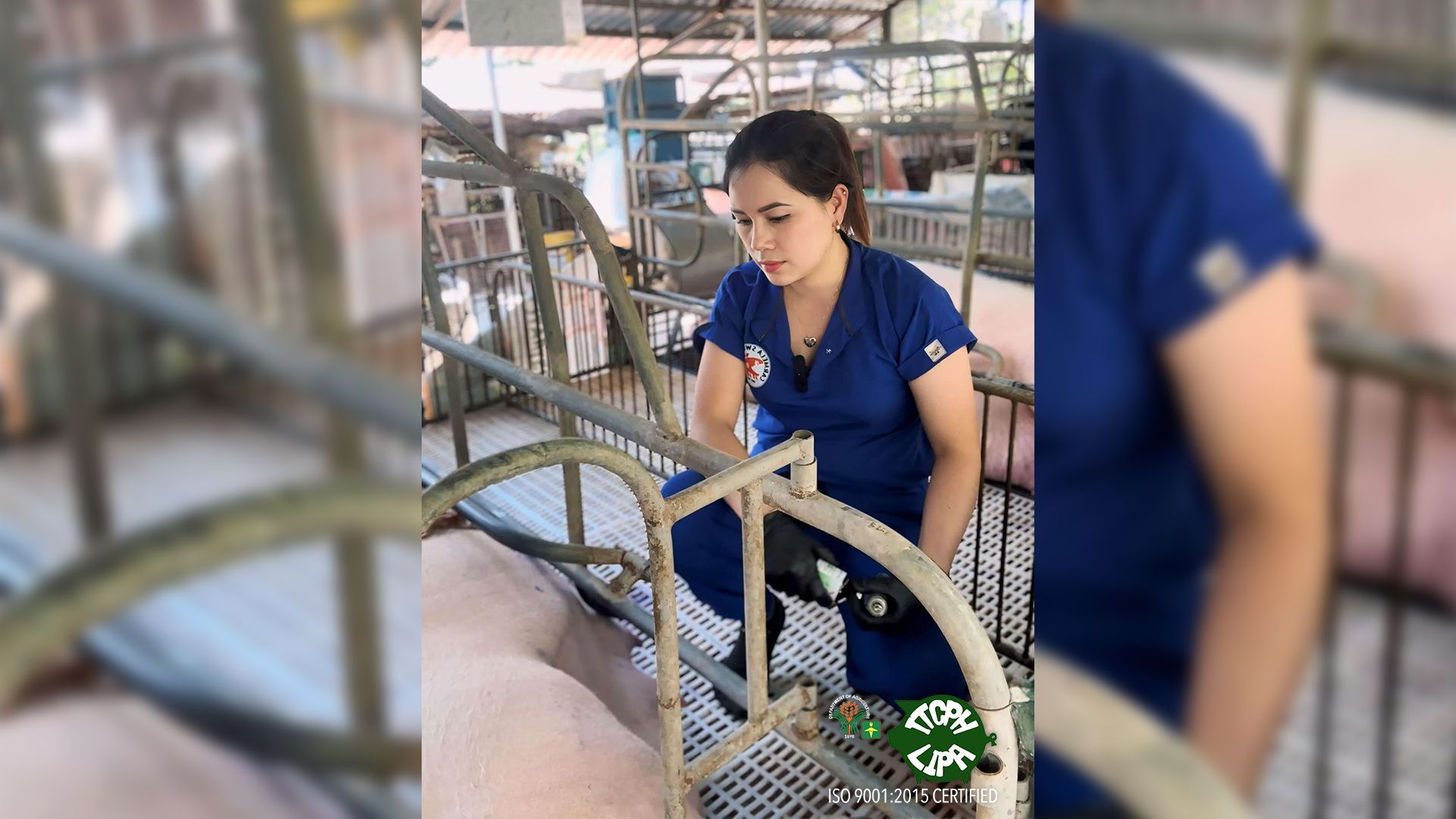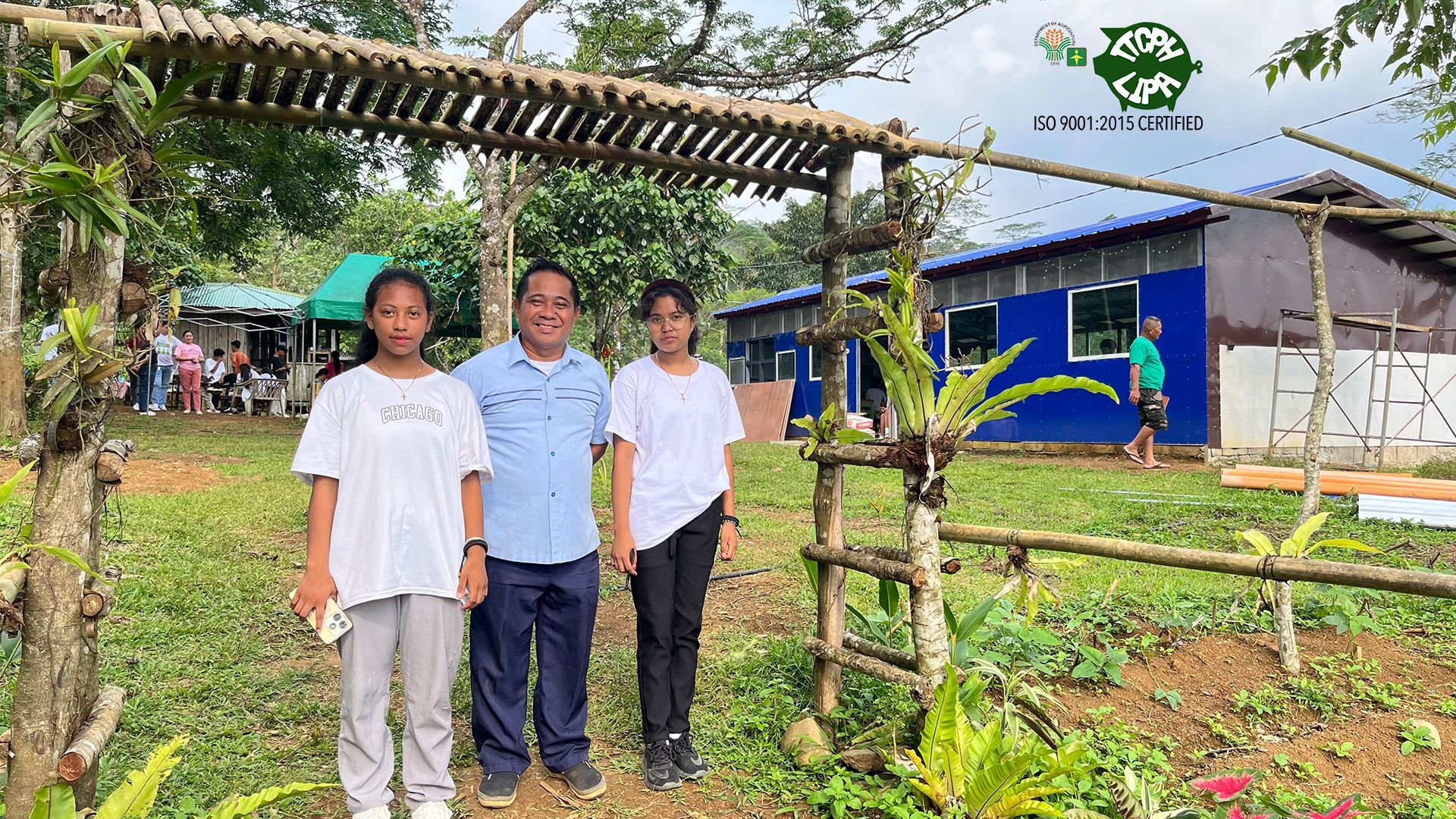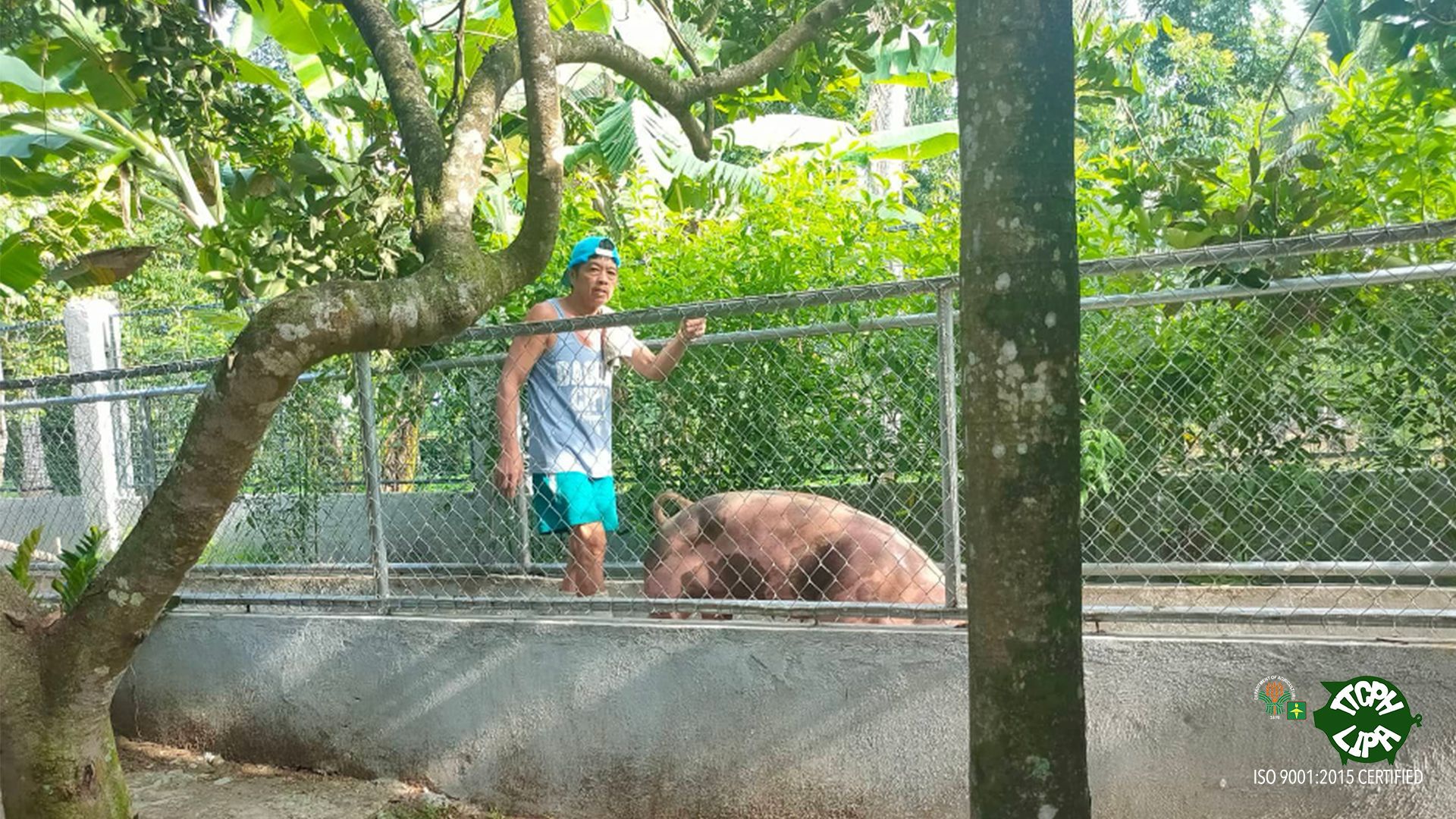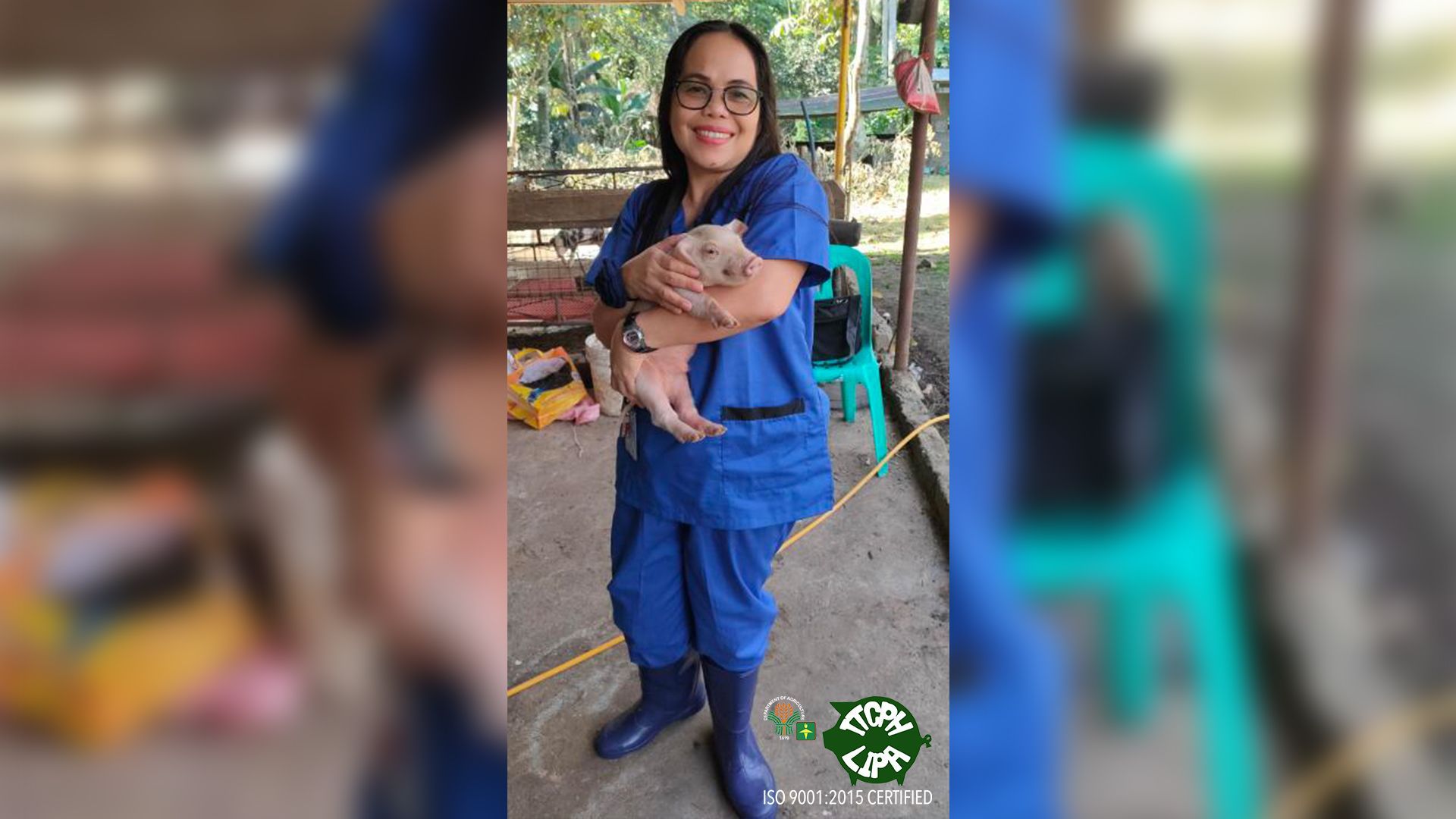Eggs as Add-on to Business, Why Not?
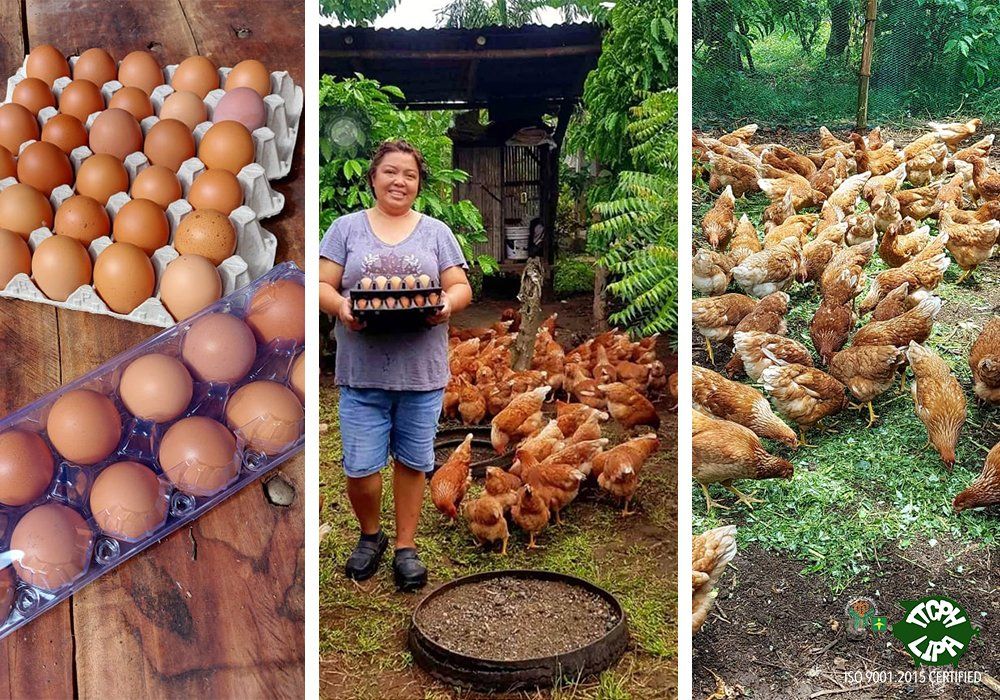
“Noong nakita ko sa ITCPH na pwede pala pagandahin ang kulay ng itlog, at saktong maglalabas ng manok yung kaibigan ko, nag try na akong mag-alaga”.
Maila, a woman farmer in Ibaan, Batangas, has been heavily involved in farming since the '90s. Mainly focused on sugarcane, coffee, and pepper production, this lady turned to be an integrated farm owner through continuous learnings and a bunch of friends rooting for agriculture and livestock.
Knew and attended trainings at ITCPH in the early 2000s, she became more inquisitive about the science of growing pigs. Among the courses she participated in were Basic Pig Husbandry, Ethnoveterinary Medicine, Green Pigs, and Free-Range Chicken Production. The importance of agriculture is not new to Maila since she holds a degree in Agribusiness Management at the University of the Philippines, Los Baños, Laguna.
Ms. Maila Vilela-Toreja's farm in Ibaan, is an accredited Learning Site (LS) of the Agricultural Training Institute – Region IVA Training Center since 2016. Stables and greens can be seen in the 2 ha of land. Among which are fruit-bearing trees, coffee, pepper, vanilla, native pigs, native chickens, and crossbred ducks.
During the pandemic, Maila eventually had the time to enhance her farm since receiving visitors is prohibited due to CoViD-19 restrictions. “Dahil bawal tumanggap ng bisita noon, I grabbed the opportunity para makapag-try ng pag-aalaga ng manok”
, shares Maila.
Only this year (2021), Maila managed to start and grow her business in layer production through free-ranging chickens. “Gusto ko gawing negosyo yung pag-mamanok, kasi yung mga pinsan ko, nagluluwas ng itlog”
. Making it happen, this witty farmer tries to enterprise in free-range chicken production since she has already acquired basic knowledge on this from the ITCPH.
From her fifty heads of chickens as a start-up, she now maintains a herd of 250 heads of Dekalb brown. Dekalb Brown are champion egg layers producing dark brown eggs.
Among her best practices in growing chickens in the most natural way is the use of probiotics or effective microorganisms, no hormones or any kind of antibiotics are injected into the animals, forages such as madre de agua, insulin plant, indigo, talinum, grass cuttings, oregano, turmeric and the trunk of a banana tree serve as a healthy snack.
In terms of housing, she maintains three batches of the chicken facility made of bamboo, recycled rabbit cages as nesting boxes, recycled roofing materials, steelematting, and range net for enclosure. Weekly rotation of ranging area has been a common practice too, to help maintain a field of grasses. Rice hull, carbonized rice-hull, and lime are regularly placed in the housing to omit the bad smell from the chicken manure. Effective microorganisms are also sprayed regularly in the beddings. Improvised curtains are also prepared, to cover the nesting area of hens during nighttime.
These practices allow birds to have full access to vegetation and sunlight, which is closest to their natural behavior.
“Yung mga manok namin, sa gitna sila ng kapihan namin nakalagay, so malamig yung kanilang area”
, Maila adds.
Her journey in free-range chicken production was not a success at the beginning. It was a learning experience for Maila from merely the purchase of chicks, up to feeding, and ranging. “Nung una kasi mga sisiw yung binili ko, pero mataas yung naging mortality, so ang nangyari, for our consumption lang, tapos may mga konting naiaalok sa iba”
, says Maila. Receiving positive feedback from friends and relatives pushed Maila to invest in another batch of hens.
This time, ready-to-lay Dekalb brown were purchased. Currently, she manages to sell her produce through social media. “Sabi nila, legit daw na free-range yung itlog na binebenta ko, dahil kitang-kita sa ganda ng kulay nung pula ng itlog ”
she added.
Aside from selling online, she also educates her clients on the importance of free-ranging chickens. “Akala kasi nila basta brown yung shell ng itlog, free-range na kaagad yon”
, narrates Maila. Usually, white hens produce white eggs, while brown chickens lay brown eggs. The type of production does not affect the color of an eggshell.
As an active women farmer, Maila has also encouraged some of her friends and other farms in Cavite and Ibaan to pursue this kind of venture. Not only does it add to their source of income, but local food production has always been a big concern for them.
“Nakakatuwa kasi halos lahat nasubukan ko nang kuhanin from the backyard. Yung itlog galing samin, ung pork, kaya rin naman i-produce, dati may palayan din kami”
, Maila proudly shares.
According to Maila, the return of investment can be seen in three-months-time. With her existing practices and management, a profit of P2.00 – 3.00 per egg can be accumulated depending on the prevailing feed cost.
As for advice to newbies, she always tell that a farmer should open the door to new learnings and technologies because farming is an ever-changing cycle. The cycle may be the same, but the management improves over time.
“If magsisimula sila ng free-range chicken production, kailangan unahin talaga yung pagtatanim ng forages, at the same time, inaaral kung ano yung tamang pag-aalaga ng manok”
, she recommends. Today, she experiments on black soldier fly larvae as an alternative source of protein feeds to chickens. Truly, learning is a continuous process.
In 2021, Maila became one of the shortlisted candidates of the 'Women of the Future, Mentor Category in Southeast Asia.
Agriculture interests Maila for many reasons. But beyond her achievements in farming, she advocates for woman empowerment and involvement in livestock.
#ITCPHway #LearningByDoing
